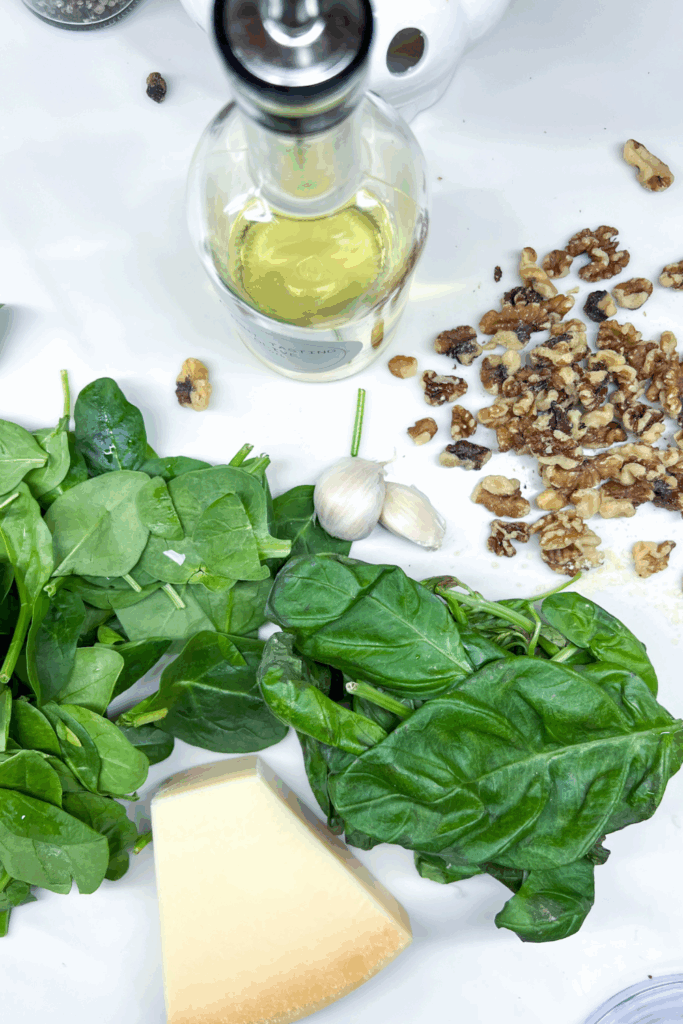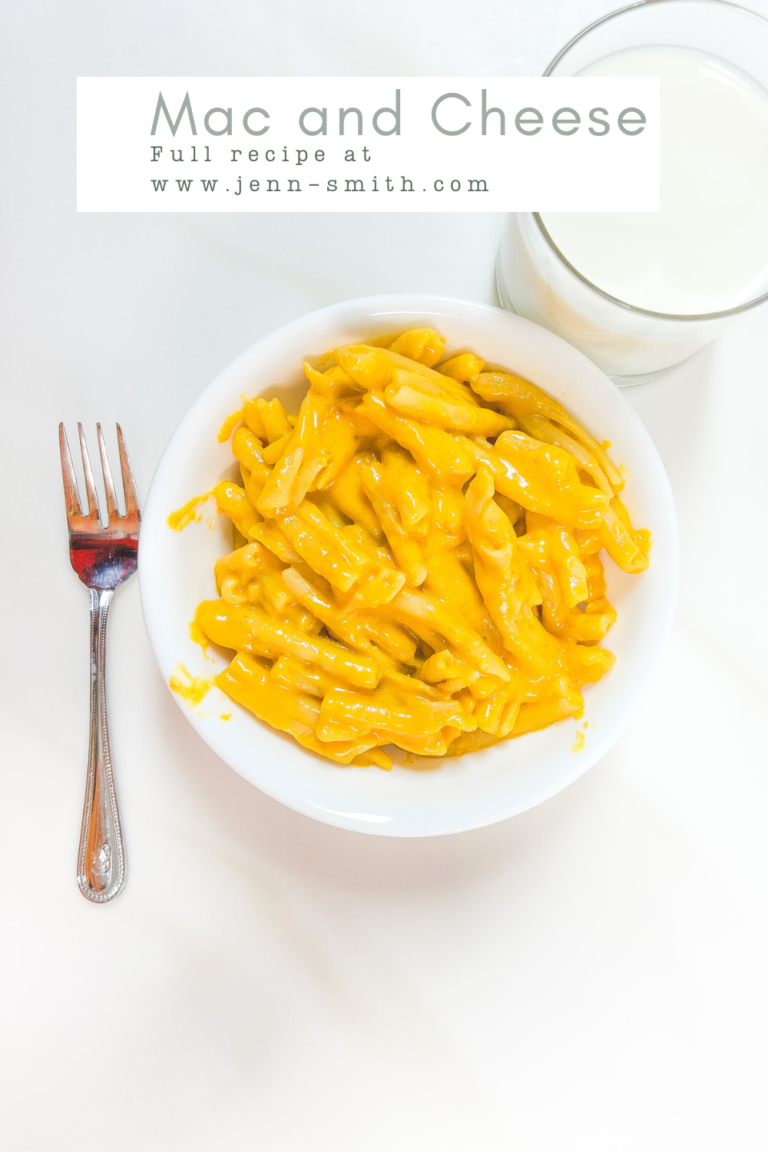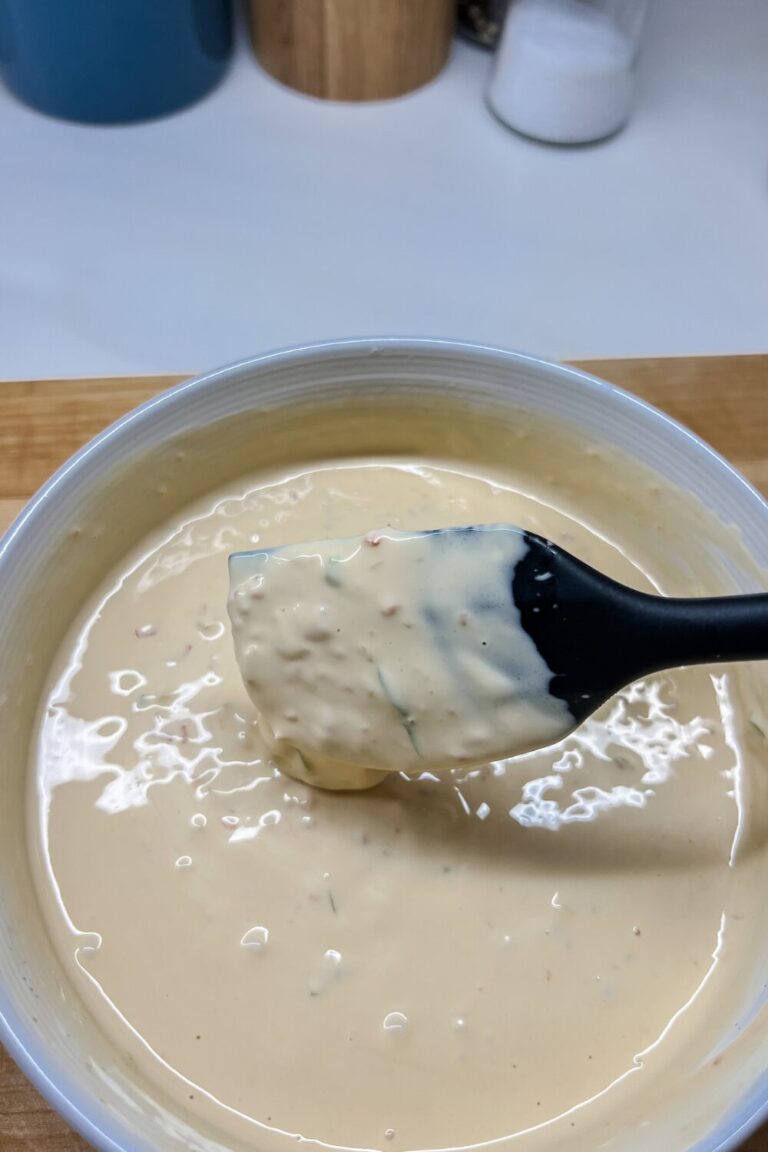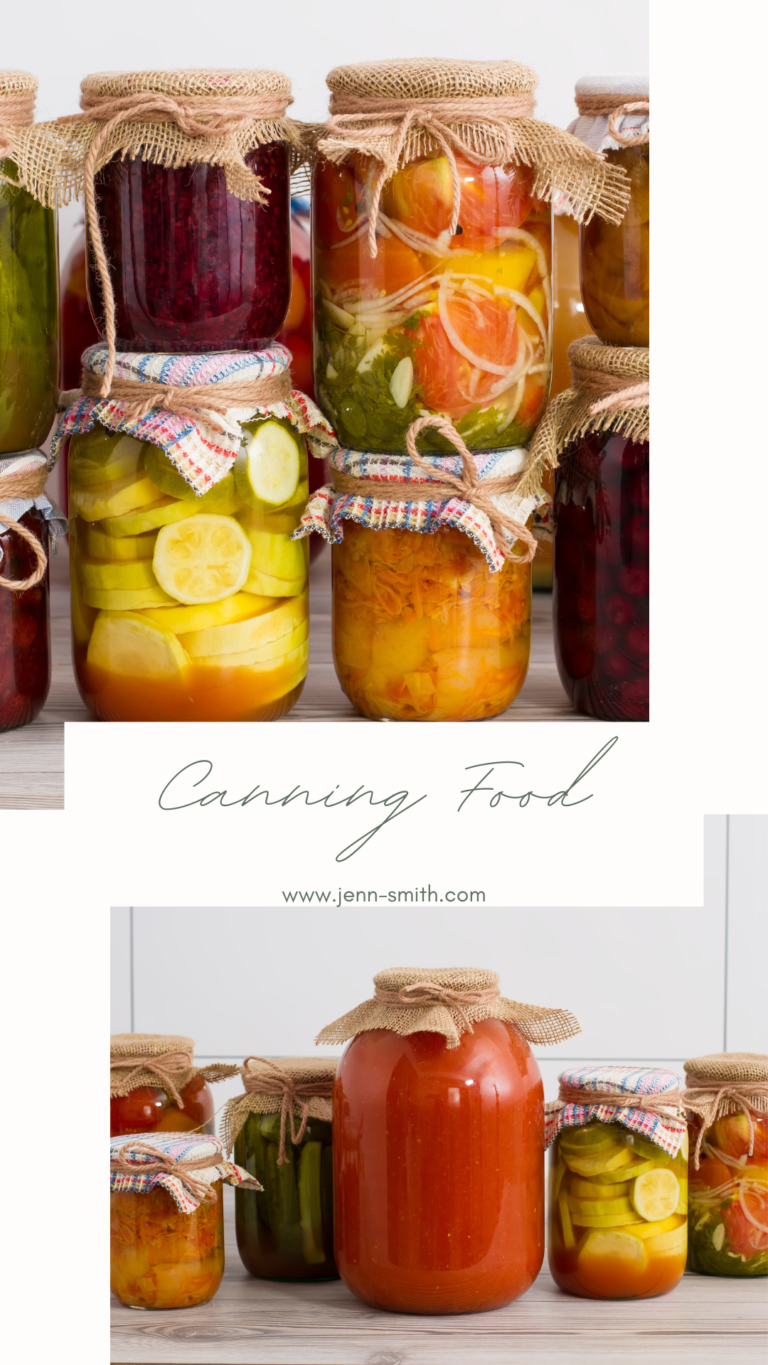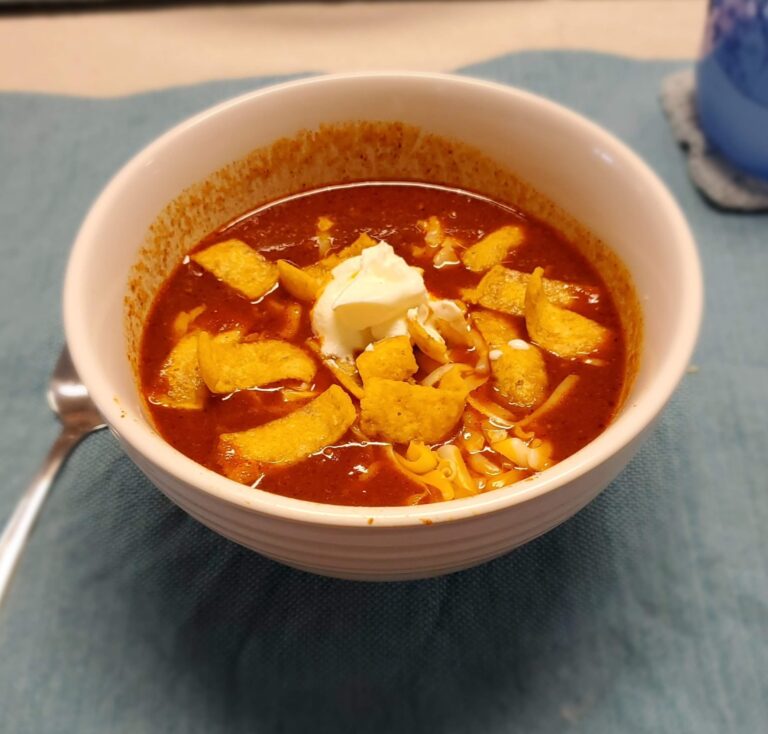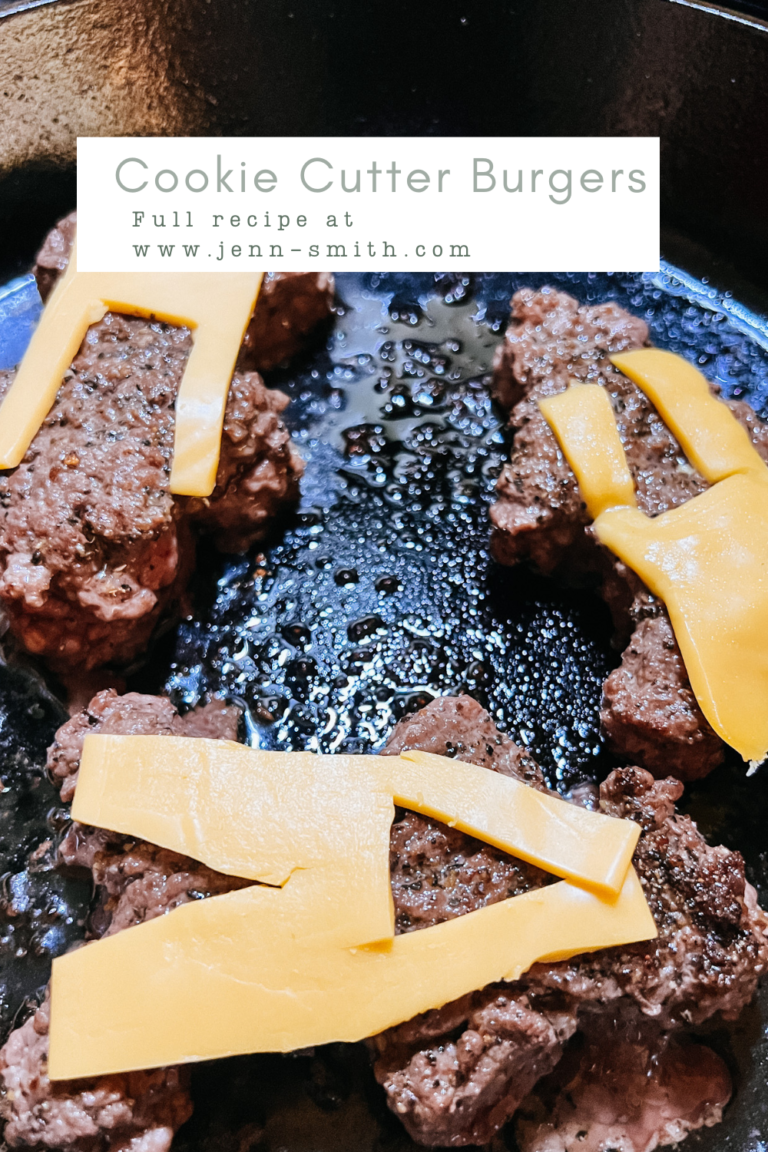Pesto Basics: A Simple, Customizable Guide
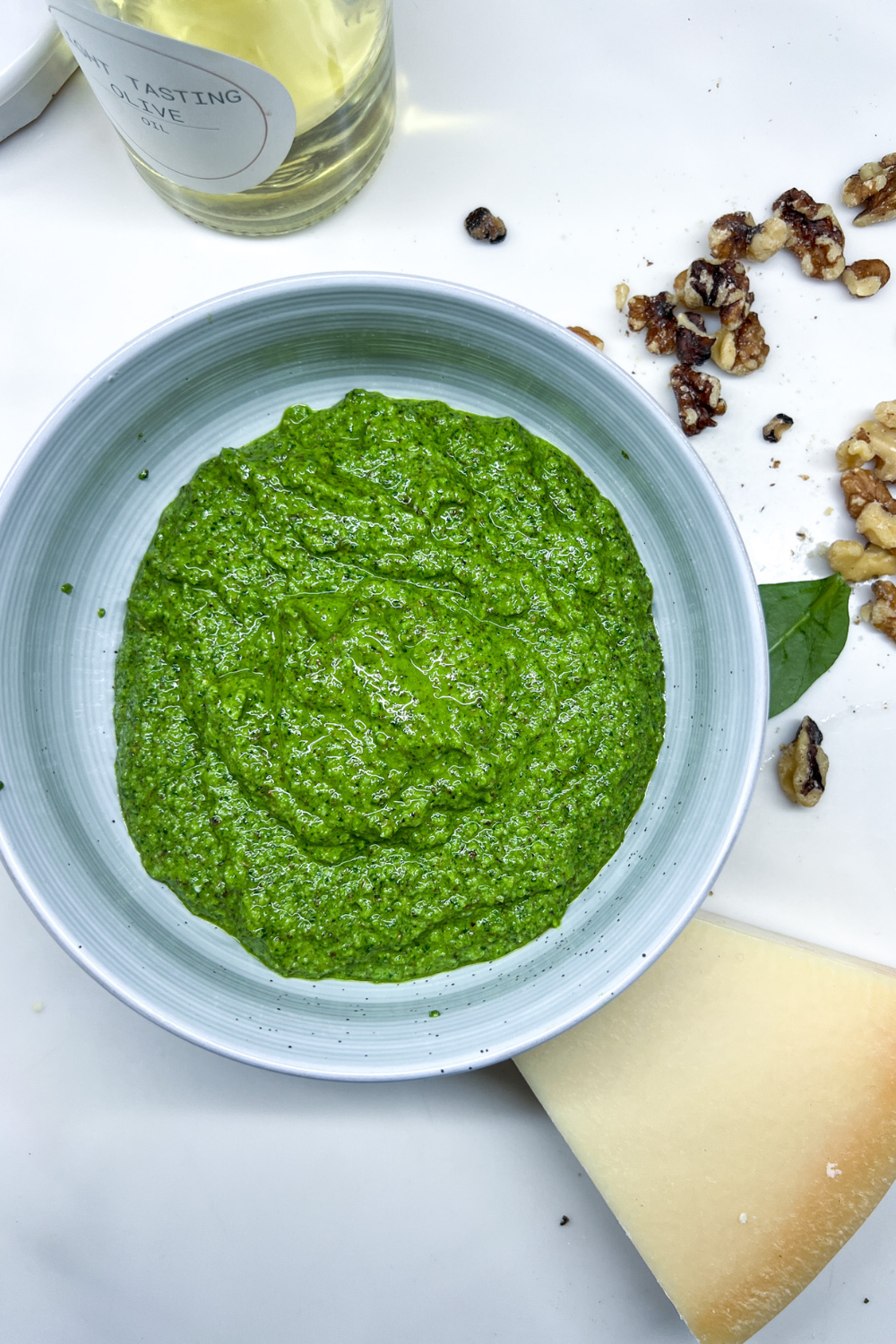
This post may contain affiliate links, which means that I make a small commission off items you purchase at no additional cost to you. Please read my Affiliate Disclosure
There’s something about pesto that just feels like summer—fragrant herbs, the brightness of lemon, the richness of good olive oil. It’s one of those sauces that can dress up almost anything, from pasta to grilled chicken, sandwiches, and even scrambled eggs. Best of all, it’s endlessly flexible and can be tailored to what you have on hand.
In this post, I’m breaking down the basics of how to make pesto from scratch, including tips on cheese swaps (yes, even the canister kind in a pinch), which nuts or seeds you can use, and even how to make it dairy-free if needed.
This recipe yields about 2 cups of pesto—perfect for dinner tonight and some extra to stash in the freezer.
If you want a tried-and-true version to start with, my favorite, Classic Pesto alla Genovese.
CHEERS 🥂 JENN
WHAT IS PESTO?
Traditional pesto (or Pesto alla Genovese) hails from Italy and is made by grinding basil, garlic, pine nuts, olive oil, and Parmesan into a rich green paste. Traditionally, it’s made with a mortar and pestle, but we’re going the modern route and using a food processor (or blender).
PESTO BASICS
INGREDIENTS
- juice of ½ lemon (optional, but adds brightness)
- 1–2 large cloves of garlic (this is based on how much garlic you like)
- nuts or seeds; add texture, flavor, and help bind everything together (pick one or a combo):
- Pine nuts, walnuts, almonds, pistachios, cashews, pecans, hazelnuts, sunflower seeds, sesame seeds, or pumpkin seeds
- hard grating cheese; produces a creamier, more mellow, more cohesive pesto that cloaks the noodles beautifully (pick one):
- Parmesan (see Fresh Vs Canister for details), Pecorino Romano, Grana Padano, Sartori BellaVitano, Cello Copper Kettle Wedge, or sharp cheddar
- Dairy-free option: Try a spoonful of miso, capers, or anchovies (skip the salt if you go this route!)
- herbs/greens, the core component (pick any combo that equals 2 cups):
- Basil, parsley, cilantro, mint, spinach, arugula, kale
- olive oil; acts as both a flavor enhancer and a binding agent.
- Substitution: Avocado oil or sunflower oil
- fine sea salt & freshly ground black pepper; adds flavor.
Parmesan: Fresh vs. Canister
I’ve tested this recipe with both freshly grated Parmesan and the kind that comes in the green canister—and honestly? The flavor was nearly identical. My hot take: if the canister is what you have on hand, use it!
The only real difference I noticed is that the texture of the pesto can be a bit thicker with pre-grated cheese, since it often contains anti-caking agents. You may need to use a little more pesto (or loosen it with a splash of pasta water or olive oil) when serving. But truly—if it’s what’s in your fridge, go for it. You’ll still end up with something delicious.
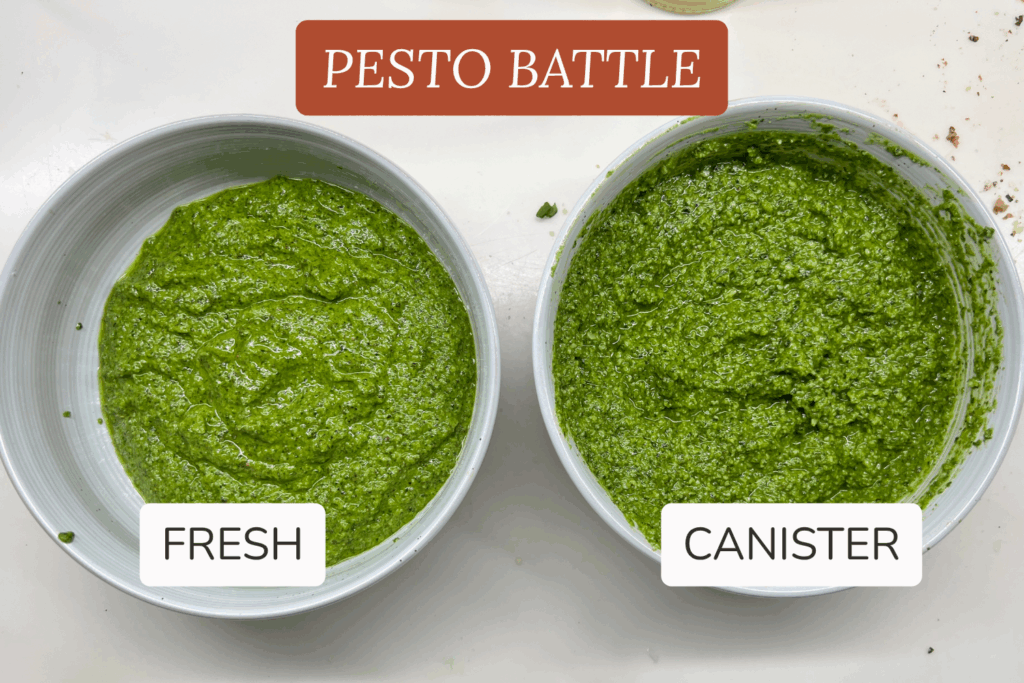
INSTRUCTIONS
Prep the base
In a food processor, pulse the garlic, nuts/seeds, and lemon juice until finely chopped. (Chopping these first helps protect the basil from bruising.)
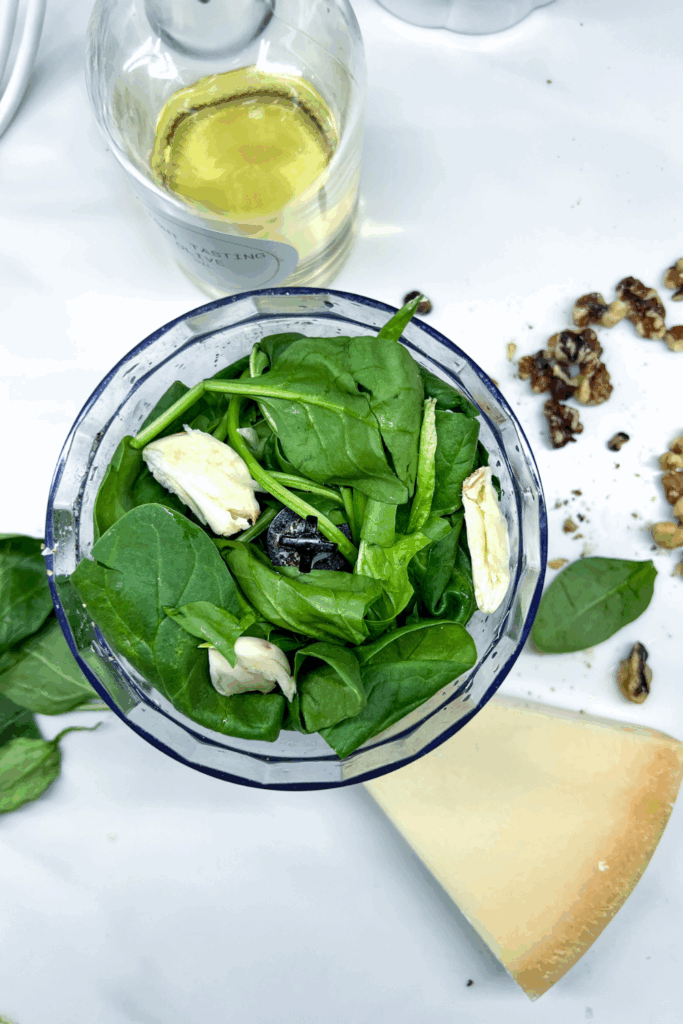
Add the greens
Add your herbs or greens and pulse 5–6 times until roughly chopped.
In goes the cheese
Add the grated cheese and pulse a few more times to combine.
Add the oil
With the processor running, slowly drizzle in the oil. Scrape down the sides as needed and blend until it’s mostly smooth but still has some texture.
STORAGE & REHEATING DETAILS
Pesto keeps well in the fridge for up to a week when stored in an airtight container. Pour a thin layer of olive oil on top to help preserve it longer.
To freeze: Spoon pesto into an ice cube tray. Once frozen, pop the cubes into a freezer bag. Perfect for tossing into soups, stews, or hot pasta on busy nights!
 Buy Now →
Buy Now → 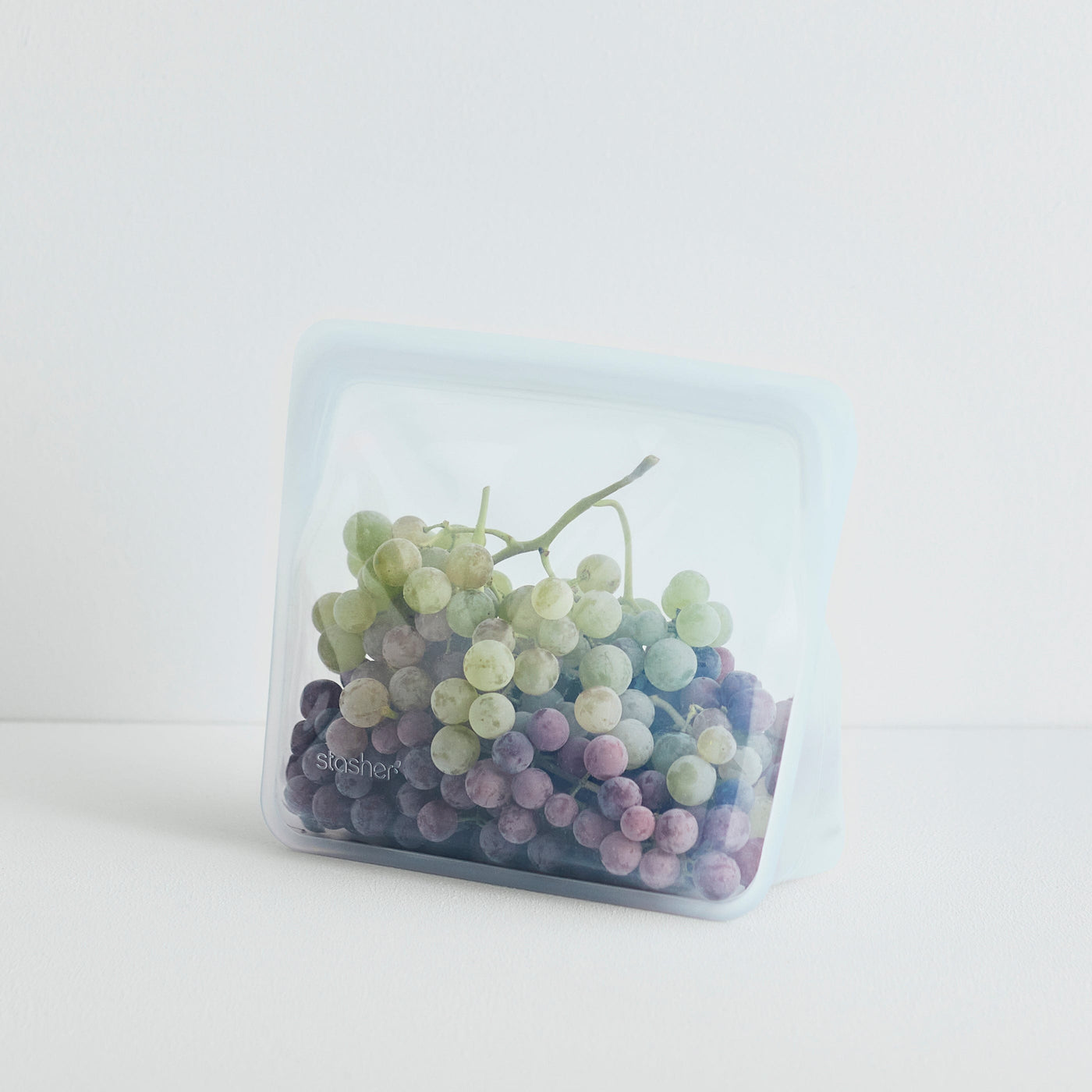 Buy Now →
Buy Now → 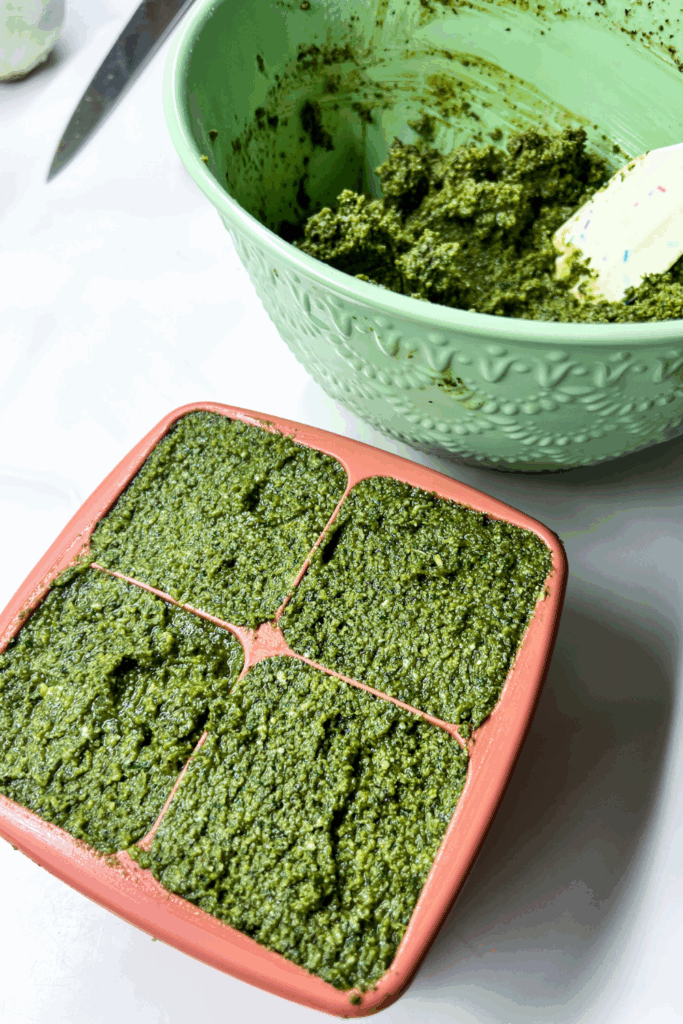
COOKING WITH KIDS
DISCLOSURE: Please keep in mind that the following tips are general and are meant to be suggestive. I personally use these strategies with my own kids, who are all unique even within my own family of five. Therefore, please regard these as suggestions or ideas. If you feel that your child requires more or less assistance, then go with what you and your child are comfortable with. Ultimately, you know your child best.
Pesto is a fantastic recipe to make with little kitchen helpers. Here’s how to get the kids involved:
Younger Kids (Ages 3–6):
Older Kids (Ages 7+):
Making pesto together can be a sensory-rich experience—smelling fresh basil, hearing the whirl of the blender, and of course, tasting the finished product. It’s a great way to let kids explore cooking without turning on the oven.
Whether you go classic with basil and Parmesan or mix it up with arugula and cashews, homemade pesto is an easy, flavor-packed way to add something special to your meals. I hope this guide helps you feel confident to make it your own—and maybe even get the kids involved, too.
Cheers! 🥂

DID YOU MAKE A PESTO?
Please take a moment to leave a comment and provide a star rating below. If you share a picture on Instagram don’t forget to tag me @jenngiamsmith! I always share your posts on my story and tag you!
Share or save it:
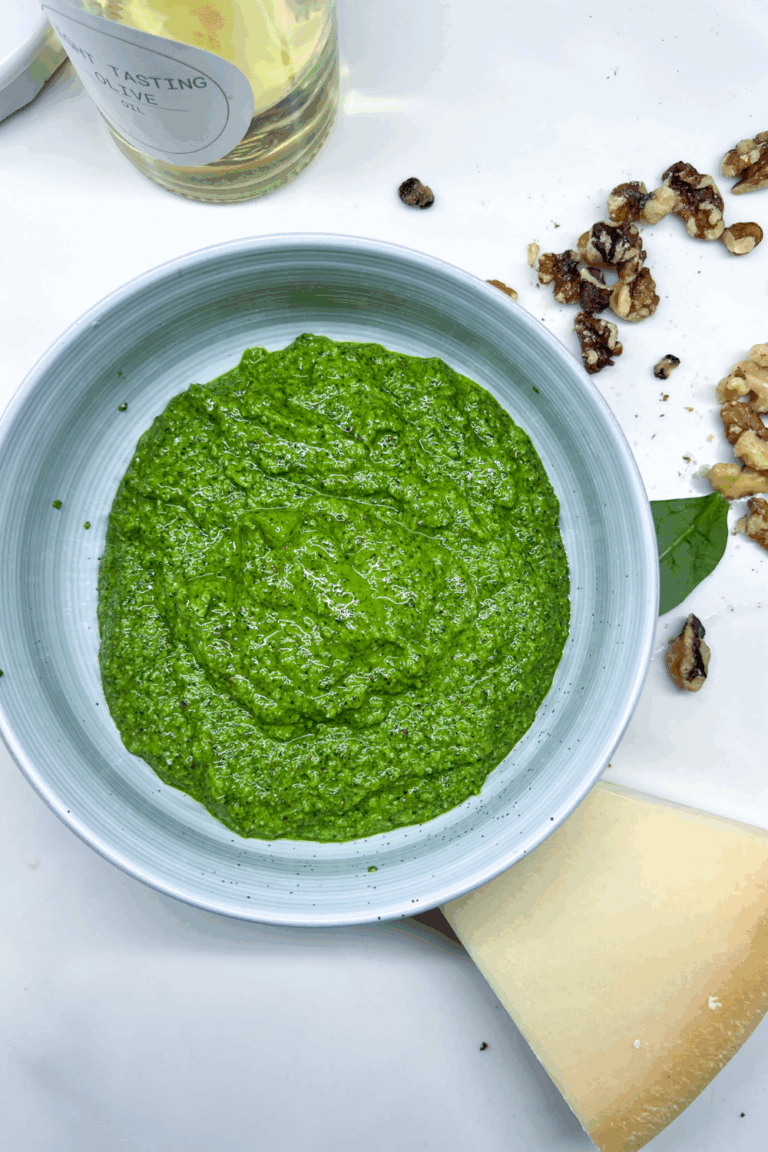
Pesto Basics: A Simple, Customizable Guide
A flexible, flavorful pesto recipe that can be made with your favorite herbs, nuts, and cheese—or dairy-free alternatives. Great for pasta, sandwiches, grilled veggies, and more!
- Total Time: 10 minutes
- Yield: 2 cups
Ingredients
- 1-2 large garlic cloves
- 1/2 cup nuts or seeds (choose one or a combo):
- Pine nuts
- walnuts
- almonds
- pistachios
- cashews
- pecans
- hazelnuts
- sunflower seeds
- sesame seeds
- pumpkin seeds
- 2 cups herbs/greens (choose a mix that equals 2 cups):
- Basil
- parsley
- cilantro
- mint
- spinach
- arugula
- kale
- 1/2 cup grated cheese (choose one):
- Parmesan
- Pecorino Romano
- Grana Padano
- Sartori BellaVitano
- Cello Copper Kettle Wedge
- mature cheddar
- Dairy-Free Option: 1 tablespoon white miso, capers, or anchovies (See NOTES 1 for details)
- 1/2 cup extra virgin olive oil (See NOTES 2 for substitutions)
- 1/2 teaspoon fine sea salt (See NOTES 1 for details)
- 1/4 teaspoon freshly ground black pepper
- Juice of 1/2 lemon (optional)
Instructions
-
Chop the Base: In a food processor, pulse garlic, chosen nuts/seeds, and lemon juice until finely chopped.
-
Add Greens: Add herbs or greens and pulse 5–6 times until chopped but not pureed.
-
Add Cheese: Add grated cheese (or dairy-free alternative) and pulse a few more times to incorporate.
-
Blend with Oil: With the food processor running, slowly drizzle in the olive oil. Scrape down the sides and continue blending until mostly smooth but still textured.
Equipment

Beautiful 2-Speed Immersion Blender with Chopper & Measuring Cup, White Icing by Drew Barrymore
Buy Now →Notes
- Salted Add-Ins: If using anchovies, capers, or miso, skip the added salt.
- Oil Options: A 1:1 ratio of Avocado or sunflower oil works well if you’re out of olive oil.
Storage
-
Refrigerator: Store in an airtight container for up to 1 week. Pour a thin layer of oil on top to help preserve freshness.
-
Freezer: Spoon pesto into an ice cube tray. Freeze until solid, then transfer cubes to a freezer-safe bag. Use directly in hot dishes as needed.
- Prep Time: 5 minutes
- combining: 5 minutes
- Category: Sauce
- Method: food processor
- Cuisine: Italian
Nutrition
- Serving Size: 2 cups
© Photography, Prop Styling, and Food Styling by Jenn Giam Smith | Jenn Smith, LLC

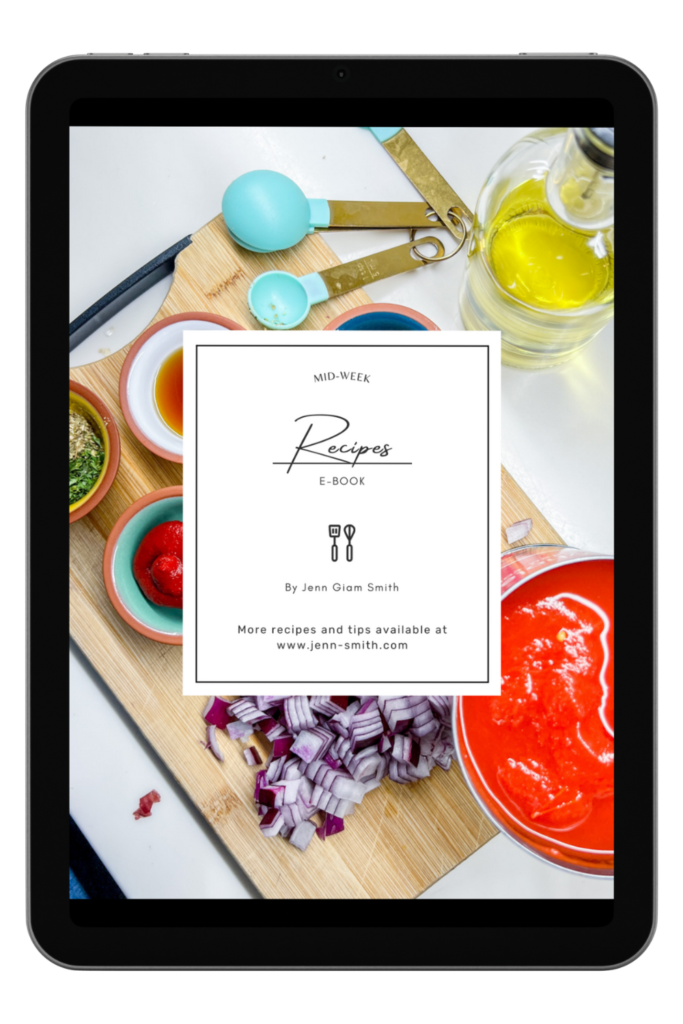
MAKE MID-WEEK A LITTLE EASIER
Sign up below, and I’ll send you a FREE E-BOOK featuring six of my all-time favorite mid-week recipes!

